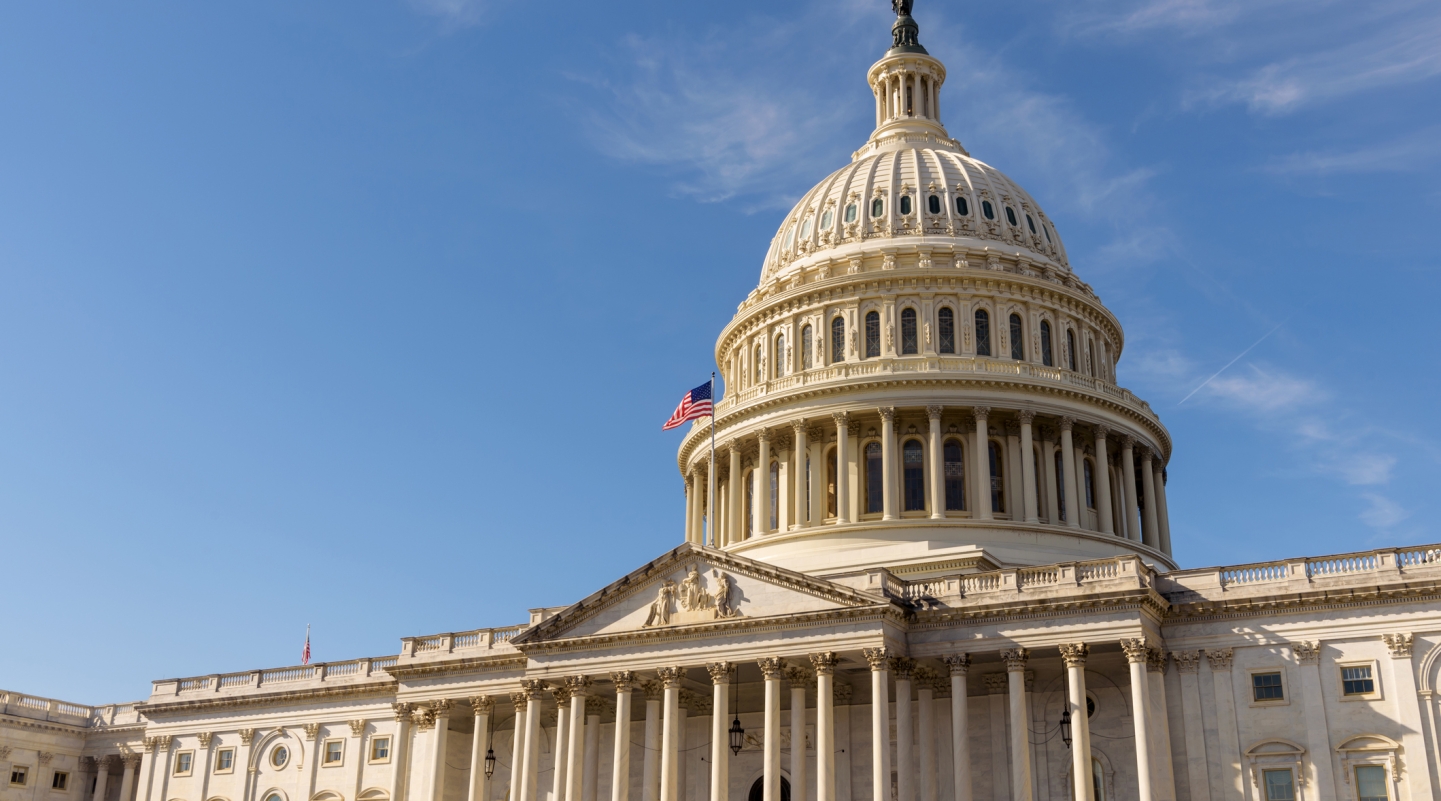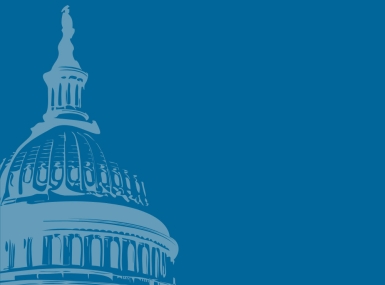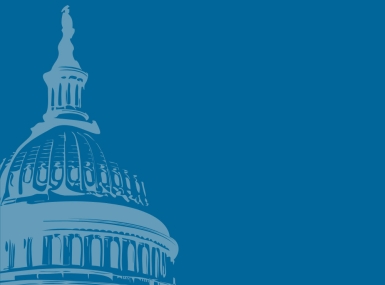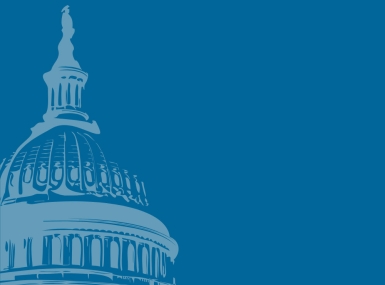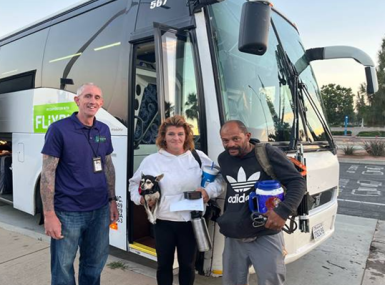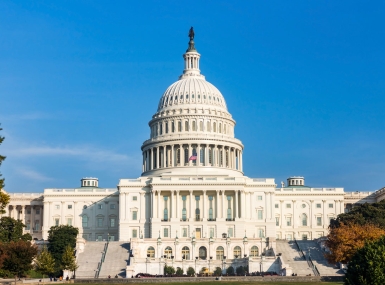Federal Reforms to Social Safety Net Programs: What Counties Should Know

Upcoming Events
Related News
Regardless of population size, geography and available resources, counties are deeply invested in our residents’ health and well-being. Every day, we provide services that help vulnerable individuals and families thrive, functioning as an integral part of the federal, state and local partnership in human service delivery.
Jump to Section
Counties, regardless of size, location or resources, are deeply committed to promoting the health and well-being of residents. Each day, counties deliver essential services that support vulnerable individuals and families, serving as a vital partner in the federal, state and local human services delivery system.
While many federal human services and education programs are administered through federal-state partnerships, some states delegate the management of key safety net programs—such as the Supplemental Nutrition Assistance Program (SNAP), Temporary Assistance for Needy Families (TANF) and Social Services Block Grant (SSBG)—to counties. County responsibilities vary by program and may include contributing administrative funding, determining eligibility, delivering services or contracting with providers, managing program funds, meeting Maintenance of Effort (MOE) and nonfederal share requirements, collecting data, enrolling participants and more.
On February 25, NACo joined a bipartisan coalition of national organizations representing states, counties and cities in sending a letter to congressional leadership expressing concern over proposed changes to SNAP, TANF and SSBG. The letter followed recent budget reconciliation proposals that would enact significant cuts to these programs.
This FAQ expands on the letter, outlining the potential impact of these cuts on counties and providing steps county leaders can take to advocate for preserving funding for these critical services.
How do changes to safety net program funding affect counties?
Social Services Block Grant
Nine states (Colorado, Minnesota, New York, North Carolina, North Dakota, Ohio, Pennsylvania, Virginia and Wisconsin) pass SSBG funds directly to counties, though counties in other states can access SSBG funds as well. The highest share of SSBG spending goes toward child welfare and child protective services, counseling and support services and adult protective services. SSBG is the primary source of federal funding for adult protective services, which prevent and remedy abuse, neglect and exploitation of the elderly and disabled adults. The elimination of SSBG would shift the costs of providing these services to counties who are already operating under tight budget constraints, ultimately leading to a reduction of services for our most vulnerable residents.
Temporary Assistance for Needy Families
TANF is an important source of flexible funding for a variety of anti-poverty activities benefiting vulnerable residents, including cash assistance, child care, education, job training and work support programs. Nine states (California, Colorado, Minnesota, New Jersey, New York, North Carolina, North Dakota, Ohio and Virginia), representing more than half of the national caseload, delegate TANF administration, including Maintenance of Effort (MOE) requirements, to counties. Eliminating work participation waivers and reducing federal funding for TANF would eliminate important local flexibilities as well as increase the administrative and fiscal burden on state and local programs.
Supplemental Nutrition Assistance Program
As the largest federal nutrition program reaching nearly 41 million households, SNAP is a foundational part of the social safety net and has a significant impact on combating hunger and poverty in low-income households, particularly in rural communities. Counties are responsible for administering the program in ten states, California, Colorado, Minnesota, New Jersey, New York, North Carolina, North Dakota, Ohio, Virginia and Wisconsin, that represent 34.3 percent of total participants, or 14.6 million people. Any reduction, or cost-shift in benefits for participants will increase the demand on state and locally funded service providers. Additionally, restricting a state’s ability to grant work exemptions or ending Broad-Based Categorical Eligibility (BBCE) would take away food assistance from participants and limit important state flexibility to tailor SNAP to meet the needs of their individual populations.
FY 2025 budget resolutions and potential impacts on human services programs
Both the U.S. House and Senate have advanced budget blueprints that could lead to major policy changes through the reconciliation process. The proposed spending targets serve as minimums, meaning committees must cut at least the specified amount but could go further.
U.S. Senate
On February 21, the Senate passed its budget resolution (S. Con. Res. 7), which allows for up to $515 billion in additional deficit spending over 10 years. It instructs the Senate Finance Committee—which oversees SSBG and TANF—and the Senate Agriculture Committee—which oversees SNAP—to each reduce spending by $1 billion.
U.S. House of Representatives
The House budget resolution (H. Con. Res. 14) proposes at least $1.5 trillion in mandatory spending cuts over the next decade. It tasks the Ways and Means Committee with $330 billion in reductions and the Agriculture Committee with $230 billion. The resolution also includes $4.5 trillion in tax cuts.
The $230 billion target for the Agriculture Committee will likely impact SNAP, with potential proposals including cost shifts to states and counties, a rollback of the 2021 Thrifty Food Plan update, and changes to Broad-Based Categorical Eligibility (BBCE). For the Ways and Means Committee, options under consideration include eliminating SSBG, reducing TANF funding and ending work participation waivers for TANF recipients.
Shifting SNAP food benefit costs to states
Since SNAP was established nearly 50 years ago, the federal government has fully funded food benefits, while states and counties—responsible for eligibility and benefit distribution—have shared about half the administrative costs. Although the House and Senate Agriculture Committees have not released specific spending cut proposals, one idea under consideration is shifting some benefit costs to states. The chart below illustrates how even modest changes to SNAP benefit funding could affect state budgets.
County uses of SSBG
- Jefferson County provides adult protective services, child welfare services and disability services to 20,000 individuals each year through programs funded with SSBG dollars. These programs help locate lost parents, resolve crises and enforce support orders. With no existing alternative funding to offset a loss of SSBG, these programs would have to cut staff and scale back services or shut down entirely.
- Arapahoe County is able to sustain a staff of 298 people that serve 10,000 individuals a year through SSBG funds. These programs include adult protective services, child welfare services and child care programs. There is no other source of funding that could replace the loss of SSBG and these programs would need to be reduced or altogether eliminated, resulting in staff reductions and the institutionalization of elderly and disabled individuals currently receiving home care if these dollars are reduced.
- El Paso County provides child welfare services, adult protective services and child care to almost 4,000 individuals each year through programs funded by SSBG. A loss of this funding would force a reduction in staff and the services they are able to provide, possibly resulting in the elimination of services altogether.
- Montrose County uses SSBG to fund programs for adult protective services, child welfare, disability services and child care. Through these funds, the county is able to provide these services to roughly 600 people each year. There is no other source of funding that could cover the loss of SSBG, meaning the programs would need to reduce staff and elderly and disabled patients currently receiving home care would need to be institutionalized.
- Brown County uses SSBG funds to fund child welfare services, adult protective services, services to individuals with disabilities and child care. According to the county, there is no other source of state or local funding that could cover the loss of SSBG dollars, and therefore, services would have to be reduced or eliminated.
- In Chippewa County, Minnesota, SSBG serves similar functions. If eliminated, the county would have to absorb the $310,000 that this covers for helping provide services that keep its most vulnerable populations safe. This would cost the county another 2.5 percent increase on the county levy, representing a significant financial burden for the small rural county.
- Stearns County, Minnesota would also be forced to reduce services (including adult protective services, child welfare, and services to individuals with disabilities) for nearly 6,000 county residents, with older adult residents in the county facing possible institutionalization due to the loss of in-home supports.
- Wayne County uses SSBG funds to support adult protective services and child welfare, as well as adult senior day care services, home-based services for seniors, support for a domestic violence shelter, case management for at-risk youth in schools, and transportation services for individuals to and from dialysis and chemotherapy. According to the county, SSBG is one of the few revenue streams that allows it to serve certain populations of vulnerable adults, and many senior services would be curtailed or terminated without this funding stream.
- Miami County, Ohio relies on SSBG to support the provision of mental health services at a counseling center, legal services for women and children who are fleeing DV situations, and a Family Abuse Shelter, along with services to individuals with disabilities, adult protective services and child welfare services. There is no other source of state or local funding to cover the elimination of those dollars.
- Erie County, Pennsylvania uses SSBG funds for mental health administrative case management. Without these funds, the county would face a 25 percent reduction in its funding for these services, which coordinate supports for roughly 1350 individuals.
- Crawford County, Pennsylvania uses its SSBG allocation to support in home community habilitation services for individuals with intellectual disabilities and to support mental health services at the county drop in center, which saw a caseload of 743 individuals in 2024.
- Westchester County dedicates SSBG dollars for child welfare, child care, adult protective services, and services for individuals for disabilities. Through the county's foster care wrap-around programs, they are able to provide roughly 100 children and their caregivers ongoing support upon court-ordered discharge from foster care, providing hands-on assistance and preventing their return to foster care.
- Mecklenburg County supports approximately 750 individuals annually using SSBG. The county allocates their funding towards services for adults, including social work services for seniors, adult protective and guardianship services. Additionally, the funds are crucial for youth and family services, funding foster care permanency planning and placement efforts, as well as court-ordered and supportive services for children and families.
- Traill and Steele County use SSBG funds towards adult protective services, child welfare services, child care, and services to individuals with disabilities. Without this funding, the counties would have to backfill the loss on an already tight budget.
- Middlesex County uses SSBG funds for child welfare services as well as adult protective services, providing companion care to older adults that do not yet meet criteria for more intensive personal care services typically covered by Medicaid. There is no other source of state or local funding that could cover the loss of SSBG funding, meaning that services would have to be reduced or eliminated, and elderly and disabled individuals who are receiving services at home would have to be institutionalized.
- SSBG funds are included in Community Aids – flexible funding streams for county governments that can be used for child welfare, behavioral health, disability services and adult protective services. Statewide, SSBG funds serve 86,000 children and 37,000 adults. Eliminating SSBG would represent a significant cost shift to county governments in Wisconsin, leading to a reduction in services.
Next steps
With both chambers having passed their FY 2025 budget resolutions, the next step is for the House and Senate to negotiate a unified plan. While the timing remains uncertain, significant federal spending cuts are expected—potentially affecting programs like SSBG, TANF and SNAP, which counties help administer. Specific impacts won’t be known until policy details are included in a reconciliation package.
Contact

